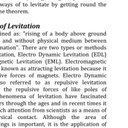Regulation of sesquiterpenoid metabolism in recombinant and elicited Valeriana officinalis hairy roots.
Atslēgvārdi
Abstrakts
The medicinal properties of Valerian (Valeriana officinalis) root preparations are attributed to the anxiolytic sesquiterpenoid valerenic acid and its biosynthetic precursors valerenal and valerenadiene, as well as the anti-inflammatory sesquiterpenoid β-caryophyllene. In order to study and engineer the biosynthesis of these pharmacologically active metabolites, a binary vector co-transformation system was developed for V. officinalis hairy roots. The relative expression levels and jasmonate-inducibility of a number of genes associated with sesquiterpenoid metabolism were profiled in roots: farnesyl pyrophosphate synthase (VoFPS), valerendiene synthase (VoVDS), germacrene C synthase (VoGCS), and a cytochrome P450 (CYP71D442) putatively associated with terpene metabolism based on sequence homology. Recombinant hairy root lines overexpressing VoFPS or VoVDS were generated and compared to control cultures. Overexpression of the VoFPS cDNA increased levels of the corresponding transcript 4- to 8-fold and sesquiterpene hydrocarbon accumulation by 1.5- to 4-fold. Overexpression of the VoVDS cDNA increased the corresponding transcript levels 5- to 9-fold and markedly increased yields of the oxygenated sesquiterpenoids valerenic acid and valerenal. Our findings suggest that the availability of cytoplasmic farnesyl diphosphate and valerenadiene are potential bottlenecks in Valeriana-specific sesquiterpenoid biosynthesis, which is also subject to regulation by methyl jasmonate elicitation.


